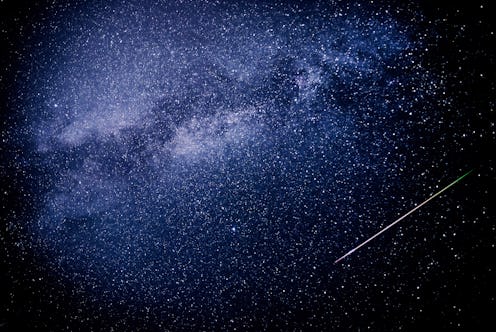Life
A Newly Discovered Planet Could Contain Life

Here's your friendly reminder that we're probably not alone in this universe, although at this point aliens must think humans are the most annoying neighbors in the solar system. This week, Harvard researchers announced the discovery of a planet called LHS 1140b hanging around not far from Earth. What is LHS 1140b, exactly? It seems like new planets are being discovered left and right these days, but what makes this one special is its orbit, conveniently found in the habitable zone of a star in the Cetus constellation. Its location means the planet could harbor water, which in turn means it could be home to life as we understand it.
Spotted by scientists using the MEarth-South telescope in Chile, LHS 1140b orbits a small, dim star around 40 light years away from Earth. In space terms, that's not particularly far; one researcher told National Geographic it's practically in "our sun's backyard." The so-called super Earth is calculated to be about 40 percent bigger than our own planet, and it appears to be similarly rocky, with an iron core. Furthermore, its gravity is strong enough to hang on to an atmosphere.
According to a paper in Nature describing the findings, the planet seems temperate now, but millions of years ago, the star blasted LHS 1140b with ultraviolet rays. Although this typically destroys a planet's atmosphere, astronomers believe LHS 1140b might have gone through a magma-ocean phase feeding water into the atmosphere — and maintaining the conditions necessary for life. You know what that means: aliens.
Many scientists believe that water's unique properties — as NASA points out, it's is unlike any other liquid in molecular structure — make it essential to the formation of life. According to the current scientific understanding, the best way to find extraterrestrial life is to look for water. Outside of Earth, however, liquid water is far rarer than you may realize, which is what makes LHS 1140b's atmosphere so notable.
Amateur astronomers (or UFO enthusiasts) may recall that in February, a different research team made a similar discovery: Seven Earth-size planets orbiting a dwarf star approximately 40 light years away. They also had temperatures low enough to maintain liquid water, but in April, a new climate model suggested that only one could be habitable after all.
Of course, the same could be said about LHS 1440b this summer. At this point, there's still much to learn about the planet, but it's definitely a starting point for newer, more powerful telescopes. "This is the most exciting exoplanet I've seen in the past decade," said lead author Jason Dittmann in a press release from the Harvard-Smithsonian Center for Astrophysics. "We could hardly hope for a better target to perform one of the biggest quests in science — searching for evidence of life beyond Earth."
According to National Geographic, LHS 1140b's orbit takes it right in front of its star, so astronomers will use the illumination to take a look at the atmosphere. This, rather than alien invasions or radio transmissions, may be the first clue to life on another planet — an atmosphere that appears to be influenced by inhabitants. Humans have certainly affected our own.
Science fiction always made it seem like aliens would find us, but if the search for life is anything to go by so far, it might be the other way around. Just don't get your hopes up for major discoveries anytime soon. According to researchers, it might take years to even begin sifting through the data gathered from LHS 1140b. On the bright side, that should give humanity enough time to get itself together and make a good impression if there are aliens out there.